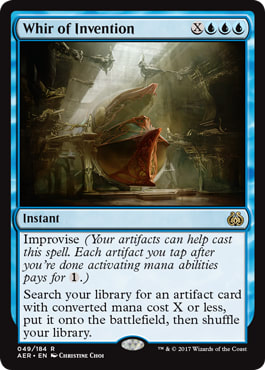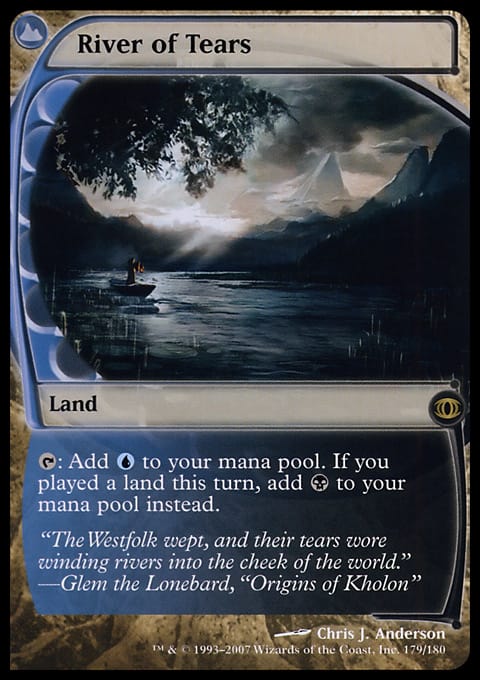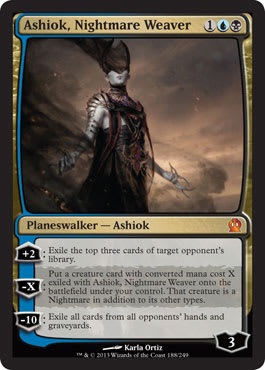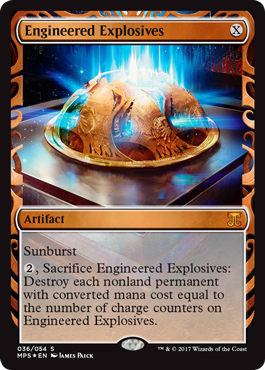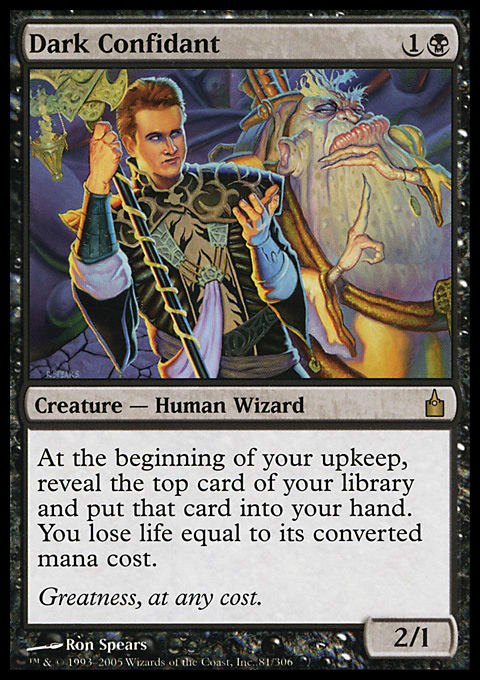This past weekend I was at the SCG Invitational in Roanoke, VA. I had asked you in my last article on what you thought I should play in Standard. The choices were between Temur Black and Esper Approach. After talking to Gabriel Nassif on Twitter and talking about Esper Approach, I decided to play the deck. Nassif had some terrific tips and advice on the deck but after all was said and done, I finished the Standard portion of the tournament at 2-2. Then Modern started. My Modern deck of choice was Jeskai Control. I ultimately went 2-2 in Modern as well putting me at a record of 4-4 for Day one. This meant that I would not make it to Day 2. My last match in Modern I lost to a ![]()
![]() Ponza deck. For those that don’t know what that is, it’s a deck that Blood Moons you and then destroys your basic lands with things like Stone Rain or Mwonvuli Acid-Moss. Then it ultimately kills you with any resolved creature like Huntmaster of the Fells, Thragtusk, Tireless Tracker, or even Goblin Rabblemaster. After losing in that fashion, I decided what I was going to play for the Modern Open the next day.
Ponza deck. For those that don’t know what that is, it’s a deck that Blood Moons you and then destroys your basic lands with things like Stone Rain or Mwonvuli Acid-Moss. Then it ultimately kills you with any resolved creature like Huntmaster of the Fells, Thragtusk, Tireless Tracker, or even Goblin Rabblemaster. After losing in that fashion, I decided what I was going to play for the Modern Open the next day.
If people wanted to make my life miserable by destroying my lands or killing me on turn three or four, I wanted to make them miserable by killing them extremely slowly by locking them out of the game with Lantern Control. I knew there was a new Whir of Invention list floating around so I looked for a couple. After finding some, I decided to message Lantern expert, Zac Elisk for some advice. As always, he dropped some knowledge on me and gave me some tips for the deck. This was the list I had sleeved up for the Modern Open in Roanoke.
Lantern of Invention ? Modern | Ali Aintrazi, 17th place Modern Open Roanoke
- Instants (5)
- 1 Abrupt Decay
- 4 Whir of Invention
- Sorceries (11)
- 3 Thoughtseize
- 4 Ancient Stirrings
- 4 Inquisition of Kozilek
- Artifacts (26)
- 1 Ghoulcaller's Bell
- 1 Grafdigger's Cage
- 1 Pyrite Spellbomb
- 1 Pyxis of Pandemonium
- 1 Witchbane Orb
- 2 Pithing Needle
- 3 Ensnaring Bridge
- 4 Codex Shredder
- 4 Lantern of Insight
- 4 Mishra's Bauble
- 4 Mox Opal
- Lands (18)
- 1 Island
- 1 Academy Ruins
- 1 Inventors' Fair
- 1 River of Tears
- 3 Botanical Sanctum
- 3 Darkslick Shores
- 4 Glimmervoid
- 4 Spire of Industry
- Sideboard (15)
- 2 Welding Jar
- 1 Pithing Needle
- 1 Grafdigger's Cage
- 1 Ghirapur Aether Grid
- 1 Nature's Claim
- 1 Ancient Grudge
- 1 Pyroclasm
- 1 Tezzeret, Agent of Bolas
- 1 Abrupt Decay
- 1 Maelstrom Pulse
- 1 Search for Azcanta
- 1 Porphyry Nodes
- 2 Leyline of Sanctity
Beautiful, terrifying, or boring? I guess it all depends on the eyes of the beholder. I personally loved the way the deck looked. Whir of Invention on paper seemed to add a lot to the deck. I had played the ![]()
![]() variant in the past, but that version had some clunky and awkward hands. My hopes were that with Whir of Invention a lot of that would be solved.
variant in the past, but that version had some clunky and awkward hands. My hopes were that with Whir of Invention a lot of that would be solved.
This was my first time playing the Whir of Invention list. I had four losses throughout the weekend and two of those losses were 100% due to pilot error. I also forgot to draw off Mishra's Bauble the first time I ever activated it. That card is just so weird. Delayed triggers are strange and not intuitive. Thankfully, I only made that mistake once. Any other time I activated a Mishra's Bauble, I drew a card. Hooray! As the day went on I got more and more familiar with the deck. I also began to understand how powerful this deck really was. I was originally unsure about only running three Ensnaring Bridges but with the addition of Whir of Invention and playing the deck for two days, it was the right call. You don’t want to get stuck with 3+ casting cost cards in your hand and with the addition of Whir of Invention, the deck had a lot more.
This deck has a lot of moving parts and tons of decisions. That’s great because it usually means you have an out to almost everything if you draw the right card. It’s bad because just one wrong activation of your Codex Shredder can mean instant death. This deck punishes you very hard for making the wrong mistakes while also rewarding you heavily for making the right ones. It’s a deck I personally enjoyed playing but am scared to play over a long day. It’s hard to have that much precision and not make any mistakes throughout the day. That being said, I do think it’s a great choice for tournaments that have two different formats, like the SCG Invitational or even the Pro Tour.
For people picking up this deck, I’m going to give you my updated list and then give you a sideboarding guide that really helped me along the way. After playing this deck in the Modern Open, this is what I’d play tomorrow.
Lantern of Invention ? Modern | Ali Aintrazi
- Instants (5)
- 1 Abrupt Decay
- 4 Whir of Invention
- Sorceries (11)
- 3 Thoughtseize
- 4 Ancient Stirrings
- 4 Inquisition of Kozilek
- Artifacts (26)
- 1 Grafdigger's Cage
- 1 Pyrite Spellbomb
- 1 Witchbane Orb
- 2 Pithing Needle
- 2 Pyxis of Pandemonium
- 3 Ensnaring Bridge
- 4 Codex Shredder
- 4 Lantern of Insight
- 4 Mishra's Bauble
- 4 Mox Opal
- Lands (18)
- 1 Island
- 1 Academy Ruins
- 1 Inventors' Fair
- 3 Botanical Sanctum
- 4 Darkslick Shores
- 4 Glimmervoid
- 4 Spire of Industry
- Sideboard (15)
- 2 Welding Jar
- 1 Sorcerous Spyglass
- 1 Grafdigger's Cage
- 1 Ghirapur Aether Grid
- 1 Nature's Claim
- 1 Ancient Grudge
- 1 Pyroclasm
- 2 Abrupt Decay
- 1 Search for Azcanta
- 1 Thoughtseize
- 3 Leyline of Sanctity
The only change maindeck I would make would be to cut the River of Tears. That card was just awful all weekend for me. It’s basically an Island that can sometimes produce Black mana if you play another land. For a deck that doesn’t paly many lands, that can come back to bite you when you can’t cast your Thoughtseize or Inquisition of Kozilek because of River of Tears. I cut the River of Tears for the fourth Darkslick Shores. The second Island is fine over River of Tears but I’m also playing another Thoughtseize in the board so against control decks, I really want access to Black mana on turn one and Darkslick Shores does that where Island does not.
As far as the Sideboard goes I’ve changed the Pithing Needle to a Sorcerous Spyglass. This is only because games two and three, it can be important to see your opponent’s hand to see if they’ve drawn any of their sideboard cards. Seeing an Ancient Grudge, Engineered Explosives, or a Shattering Spree will allow you to play around those cards. I’ve also added a third Leyline of Sanctity because I really don’t want to cast the card and adding a third one to my Sideboard increases the chance of having the Leyline in my opening hand. Finally, I’ve also cut the Maelstrom Pulse for another Abrupt Decay. They both do very similar things, but Abrupt Decay is just better. It can destroy a Blood Moon when you’re on the draw and more importantly, it can destroy Chalice of the Voids much quicker. Being uncounterable also doesn’t hurt. I personally found Tezzeret, Agent of Bolas to just cost too much. Four is a lot for this deck and I was unimpressed with him anytime I brought him in.
As for the Sideboarding guide, I know lantern players love to have different sideboards to fit their play style or to fit a certain metagame. The main deck however is usually like 55/60 at most. I got the spreadsheet Sideboarding guide form Zack Elsik who got it from Kanister’s Spreadsheet. Kanister’s Spreadsheet does an excellent job at giving you a general way of Sideboarding. It helped me along the way this past weekend. Over time I adapted it to my liking and what I felt comfortable with. In spreadsheet you’ll sometimes see the suggestion of cutting a Mox Opal or a Mishra's Bauble. This is the only major thing I disagreed with after the event. Mox Opal hands are so powerful and allow you to set up very quickly. Mishra's Bauble is similar in that it turns on Mox Opal fast while also giving you fuel for your Whir of Invention. It’s also a great card that lets you play around discard affects well. What I’m trying to say is that I wouldn’t shave Mox Opal or Mishra's Bauble because of how explosive they can be. Kanister honestly doesn’t even do it that often and almost everything else I agreed with.
The last thing I want to leave you with are cards I’ve thought about adding to the deck. Whir of Invention gives us lots of options and so does playing twelve rainbow producing permanents main deck in Mox Opal, Spire of Industry, and Glimmervoid.
If I wanted to try another Planeswalker, I’d try Ashiok before trying Tezzeret again. Ashiok is cheaper but is still a Planeswalker that is hard to deal with. Ashiok goes with your game plan as well and it exiles the cards instead of putting them in your opponent’s graveyard. Heck, maybe you’ll hit a Dark Confidant or Snapcaster Mage to bring back with Ashiok.
After Game 1, opponent’s often have 3~ cards for our deck. Jester's Cap conveniently exiles exactly three cards from our opponent’s deck. More importantly it helps against the Storm matchup which I think can be very tough. Stopping them from storming off while also being careful of Shattering Spree is no easy task.
Chalice of the Void is annoying and Engineered Explosives can go a long way with helping with that. Whiring for an Explosives will clear the battlefield of all Chalice of the Voids. You can also buy it back with Academy Ruins. Tack on the deck can produce all five colors of mana and Chalice of the Void looks very appealing.
Lantern decks have a very low converted mana cost overall. Dark Confidant can be great against attrition decks. Opponent’s usually remove as much removal as they can against Lantern, this makes Dark Confidant likely to stick. Lantern manipulates the top card of their library often, which means you can control how much damage Dark Confidant deals over the course of a game.
Padeem is like Dark Confidant but it also provides a form of protection for your artifacts. However, Padeem costs twice as much as Dark Confidant and Search for Azcanta. Having your opponent’s Ancient Grudge, Shattering Spree, or Nature's Claim rot in their hand while you draw an extra card very turn is appealing.
These are just the cards I was thinking of, I’m sure the deck has many more choices as the metagame adapts and changes. If you like controlling the game, always feeling like you have an out, or just toolbox decks, then I highly recommend you give Lantern Control a try. Just avoid the mirror match.
That’s all I’ve got for you today.
As always, thanks for reading!
Ali Aintrazi,
Follow me @AliEldrazi












